Human Orbital Spaceflights
![]()
International Flight No. 238Soyuz TMA-4AltairRussia |
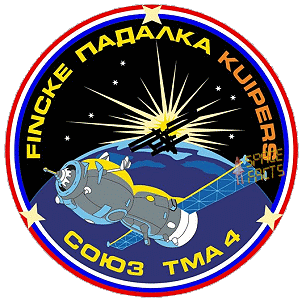 |
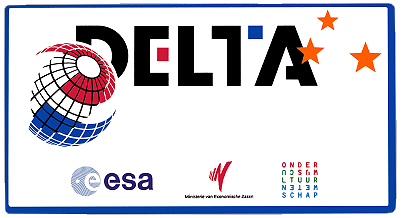
|
![]()
Launch, orbit and landing data
walkout photo |
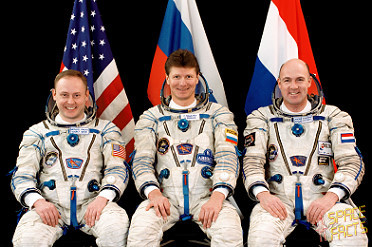 |
|||||||||||||||||||||||
alternative crew photo |
alternative crew photo |
|||||||||||||||||||||||
alternative crew photo |
alternative crew photo |
|||||||||||||||||||||||
alternative crew photo |
alternative crew photo |
|||||||||||||||||||||||
Crew
| No. | Surname | Given names | Position | Flight No. | Duration | Orbits | |
| 1 | Padalka | Gennadi Ivanovich | Commander | 2 | 187d 21h 16m 09s | 2952 | |
| 2 | Kuipers | André | Flight Engineer | 1 | 10d 20h 52m 15s | 171 | |
| 3 | Fincke | Edward Michael "Mike" | Flight Engineer | 1 | 187d 21h 16m 09s | 2952 |
Crew seating arrangement
|
 |
|
||||||||||||||||
Backup Crew
|
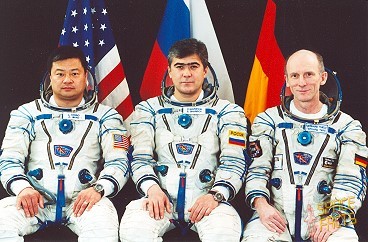 |
||||||||||||||||||||
alternative crew photo |
|||||||||||||||||||||
alternative crew photo |
Hardware
| Launch vehicle: | Soyuz-FG (No. 25M132S Zh15000-009) |
| Spacecraft: | Soyuz TMA-4 (TMA No. 214) |
Flight
|
Launch from the Baikonur Cosmodrome and
landing 84 km northeast of Arkalyk. This mission carried out the ISS Expedition 9. They were called a "caretaker" crew. Following a two-day solo flight Soyuz TMA-4 docked to ISS on April 21, 2004. Gennadi Padalka and Michael Fincke replaced the Expedition 8 crew. The crew performed 21 new experiments and four spacewalks. Together with the new ISS crew European Space Agency (ESA) Astronaut André Kuipers reached the station. After more than a week of joint operations and handover activities, Gennadi Padalka and Michael Fincke officially took command of the Station on April 29, 2004 when Expedition 8 Commander Michael Foale and Flight Engineer Aleksandr Kaleri left the Station. This mission was the site for the Advanced Diagnostic Ultrasound in Microgravity Project. Expedition 8 and André Kuipers returned to Earth that same day aboard the Soyuz TMA-3 spacecraft. André Kuipers' 11-day mission to the ISS was part of a commercial agreement between ESA and the Federal Space Agency of Russia. The EVA 1 by Gennadi Padalka and Michael Fincke was aborted on June 24, 2004 after 14 min (planned 6 hours) because of a high rate pressure lost in the primary oxygen bottle of Michael Fincke's Orlan spacesuit. The second EVA by Gennadi Padalka and Michael Fincke occurred on June 30, 2004 (5h 40m) to install a new circuit breaker to restore power to one of four gyroscopes that help orient the complex, two flexible handrails, to mount a contamination monitor to measure Station thruster exhaust, and to add end caps to two circular handrails on the airlock. Progress M-49 was launched at 12:34:23 UTC on May 25, 2004. The spacecraft docked with the Aft port of the Zvezda module at 13:54:43 UTC on May 27, 2004. Progress M-49 carried supplies to the International Space Station, including food, water and oxygen for the crew and equipment for conducting scientific research. The freighter remained docked for two months before undocking at 06:04:48 UTC on July 30, 2004 to make way for Progress M-50. It was deorbited at 10:37:00 UTC on the same day. The spacecraft burned up in the atmosphere over the Pacific Ocean, with any remaining debris landing in the ocean at around 11:23:35 UTC. The third EVA was performed by Gennadi Padalka and Michael Fincke on August 03, 2004 (4h 30m) replacing several materials exposure experiment packages and a thruster contamination monitor, installing reflectors and communications equipment needed for the docking of a new European Space Agency cargo ship, which shall dock on the ISS in 2005. Progress M-50 was launched at 05:03:07 UTC on August 11, 2004. The spacecraft docked with the Aft port of the Zvezda module at 05:01:08 UTC on August 14, 2004. Progress M-50 carried supplies to the International Space Station, including food, water and oxygen for the crew and equipment for conducting scientific research. The freighter remained docked for four months before undocking at 19:37:02 UTC on December 22, 2004 to make way for Progress M-51. It was deorbited at 22:32:06 UTC on December 22, 2004. The spacecraft burned up in the atmosphere over the Pacific Ocean, with any remaining debris landing in the ocean at around 23:23:38 UTC. The fourth and final EVA by Gennadi Padalka and Michael Fincke was conducted on September 03, 2004 (5h 21m) installing three antennas on the exterior of the Zvezda Service Module that will aid the automated docking of a new Station supply craft, the European Automated Transfer Vehicle, replacing of a pump panel on the Zarya module, installation of guides for spacesuit tethers on Zarya handrails; installation of handrail covers near the Pirs Docking Compartment hatch. ATV support operations included installing equipment for the air-to-air radio link antennas and removing all covers from antennas. Other tasks included installing a Pressure Control and Exposure Monitor Sensor on Pirs and installing protective components on the brackets of Pirs' ring handrails on EVA Hatch No. 2. The Soyuz spacecraft is composed of three elements attached end-to-end - the Orbital Module, the Descent Module and the Instrumentation/Propulsion Module. The crew occupied the central element, the Descent Module. The other two modules are jettisoned prior to re-entry. They burn up in the atmosphere, so only the Descent Module returned to Earth. The deorbit burn lasted 260.3 seconds. Having shed two-thirds of its mass, the Soyuz reached Entry Interface - a point 400,000 feet (121.9 kilometers) above the Earth, where friction due to the thickening atmosphere began to heat its outer surfaces. With only 23 minutes left before it lands on the grassy plains of central Asia, attention in the module turned to slowing its rate of descent. Eight minutes later, the spacecraft was streaking through the sky at a rate of 755 feet (230 meters) per second. Before it touched down, its speed slowed to only 5 feet (1.5 meter) per second, and it lands at an even lower speed than that. Several onboard features ensure that the vehicle and crew land safely and in relative comfort. Four parachutes, deployed 15 minutes before landing, dramatically slowed the vehicle's rate of descent. Two pilot parachutes were the first to be released, and a drogue chute attached to the second one followed immediately after. The drogue, measuring 24 square meters (258 square feet) in area, slowed the rate of descent from 755 feet (230 meters) per second to 262 feet (80 meters) per second. The main parachute was the last to emerge. It is the largest chute, with a surface area of 10,764 square feet (1,000 square meters). Its harnesses shifted the vehicle's attitude to a 30-degree angle relative to the ground, dissipating heat, and then shifted it again to a straight vertical descent prior to landing. The main chute slowed the Soyuz to a descent rate of only 24 feet (7.3 meters) per second, which is still too fast for a comfortable landing. One second before touchdown, two sets of three small engines on the bottom of the vehicle fired, slowing the vehicle to soften the landing. During the stay on board of the ISS the crew of Expedition 9 carried out the following scientific experiments: Actin (Role of Weightlessness on Metabolism), ADUM (Advanced Diagnostic Ultrasound in Microgravity), ARISS (Amateur Radio on the International Space Station), BCAT-3-4-CP (Binary Colloidal Alloy Test - 3 and 4: Critical Point), BCAT-3-SC (Binary Colloidal Alloy Test - 3: Surface Crystallization), Biodegradation (Initial stage of Biodegradation and Biodeterioration in Space), Bioekologia (Generation of High Efficiency of Microorganisms for the Production of Preparations of Biodegradable Oil, Organophosphorus Material, Measures for the Protection of Plants, as well as, of Exopolysaddharides Uses in the Petroleum Industry), Biopsy (Effect of Prolonged Space Flight on Human Skeletal Muscle), Biorisk (Influence of Factors of the Space Environment on the Condition of the System of Microorganisms-Hosts Relating to the Problem of Environmental Safety of Flight Techniques and Planetary Quarantine), Biotest (Biochemical Status of Humans in Long Duration Space Flight), Brados (Acquisition of Data About the Radiological, Electromagnetic and Different Physical Environments on Board ISS, and Their Effects on the Safety of the Crew, Space Equipment and Materials), Cardio-ODNT (Dynamics of the Main Factors of Cardiac Function, of Central and Regional Circulation in Rest and During the Influence of Lower Body Negative Pressure), CEO (Crew Earth Observations), CFE (Capillary Flow Experiment), Clinical Nutrition Assessment (Clinical Nutrition Assessment of ISS Astronauts, SMO-016E), Conjugation (Development of Methods for Designing New Recombinants Producing Strains of Bacteria in Space Flight), Diatomeya (Stability of Geographical Position and Configuration of Borders of Bioproductive Water Zones of the World Oceans, Observations by Orbition Station Crews), Diurez (Fluid and Electrolyte Metabolism and Hormonal Regulaltion of Fluid Volume), EarthKAM (Earth Knowledge Acquired by Middle School Students), Ekon (Experimental Survey on Evaluating the Possibility of Using th Russian Segment of ISS for Environmental Inspection of Work Areas of Various Facilities (Features)), Environmental Monitoring (Environmental Monitoring of the International Space Station), EPO (Education Payload Operations), EPO-Demos (Education Payload Operation - Demonstrations), ETD (Eye Tracking Device), Farma (Characteristics of Pharmacological Responses (absorption, distribution and elimination of acetominophene) in Long Duration Space Flight), FMVM (Fluid Merging Viscosity Measurement), Foam (Viscous Liquid Foam - Bulk Metallic Glass), Gematologia (Morphofunctional Characteristic of Blood Cells and the Intensity of Erythropoiesis in Humans by the Influence of Factors of Space Flight), Heart (Physiological Parameters that Predict Orthostatic Intolerance After Spaceflight), ICE-First-Muscle Proteins (International Caenorhabditis elegans Experiment First Flight-Muscle Proteins), Identifikatsia (Identification of the Sources of Dynamic Loads on ISS), Inflight Education Downlinks (International Space Station Inflight Education Downlinks), Interactions (Crewmember and Crew-Ground Interaction During International Space Station Missions), Interleukin-K (Production of Hight Quality Crystals of Interleukin -1Alpha, -1Beta and Receptor of Antagonist of Interleukin-1), Iskazheniye (Determination and Analysis of Magnetic Interference on ISS), ISSI (In Space Soldering Investigation), ISS Acoustics (International Space Station Acoustic Measurement Program), Izgib (Effect of Performance of Flight and Science Activities on the Function of On-Orbit Systems on ISS (Mathematical Model)), JAXA-GCF (Japan Aerospace and Exploration Agency - Granada Crystallization Facility High Quality Protein Crystallization Project), Journals (Behavioral Issues Associated with isolation and Confinement: Review and Analysis of Astronaut Journals), Kromka (Verification of the Effectiveness of Devices for the Protection of the Exterior Surface of ISS from Contaminants Deposited by Pulsed Cycling of Liquid-Jet), Meteoroid (Recording Meteoroidal and Technogenic Particles on the External Surface of the Service Module of the Russian Segment of ISS), Mezhkletochnoe Vzaimodeistvie (Intercellular Interactions in Space Flight), MFMG (Miscible Fluids in Microgravity), Mimetik-K (Crystalization of antigen Binding Fragment of Monoclonalical Antibody to Glucosaminilmuramildepeptide), MISSE-1 and 2 (Materials International Space Station Experiment - 1 and 2), Mobility (Promoting Sensorimotor Response Generalizability: A Countermeasure to Mitigate Locomotor Dysfunction After Long-Duration Space Flight), Molniya-SM (Investigation of Lightning Discharges in the Earth's Atmosphere and Lower Ionosphere), MOP (Motion Perception: Vestibular Adaptation to G-Transitions), Muscle (Study of Low Back Pain in Crewmembers During Space Flight), PCG-STES-RGE (Protein Crystal Growth-Single Locker Thermal Enclosure System-Regulation of Gene Expression), PCG-STES-SA (Protein Crystal Growth-Single Locker Thermal Enclosure System-Science and Applications of Facility Hardware for Protein Crystal Growth), Pilot (Individual Characteristics of Psychophysiological Regulatory Status and Reliaility of Professional Activities of Cosmonauts in Long Duration Space Flight), Plasma Crystal (Dusty and Liquid Plasma Crystals in Conditions of Microgravity), Platan (Search for Low Energy Heavy Particles of Solar and Galactic Origin), Plazmida (Transfer of Molecules of DNA by Conjugation in Space Flight), Privyazka (Development of High Precision Orientation of Scientific Devices in Space with Reports of Deformation of the ISS Hull), Profilaktika (Mechanisms of Action and Influence, and Effectiveness of Various Methods of Phrophylaxis Directed Toward Prevention of Disturbances of the Human Locomotion System in Weightlessness), Prognoz (Development of a Method of Operational Prediction of Work Load on Crew Piloting Objectives), Pulse (Vegatative (Autonomic) Regulation of the Cardio-Respiratory System of Humans in Conditions of Weightlessness), Rastenia (Growth and Development of Higher Plants through Multiple Generations), Relaksatia (Processes of Relaxation in the Ultraviolet Band Spectrum by High Velocity Interaction of Exhaust Products on ISS), Sample (Study of Microbial Communities Exposed to Weightlessness), Seeds (Seeds in Space), SKR (Skorpion: Development and Acquisition of Multifunctional Control-Measurement Device for Controlling the Environment of Scientific Experiments Inside a Pressurized Station), SNFM (Serial Network Flow Monitor), Sprut-MBI (Determination of Intracellular and Extracellular Fluid Volume in Humans in Space Flight), Tenzor (Definition of Dynamic Characteristics of ISS), Toksichnost (Development of a Metod of Express Monitoring of Toxicity of Water in Space Flight), Uragan (Hurricane: Experimental Development of Groundbased System of Monitoring and Predicting the Progression of a Naturally Occurring Technogenic Catastrophe), Vaktsina-K (Structural Study of Protein Candidats in a Vaccine for AIDS on Earth and in Space), Vektor-T (Study of a High Precision System for Prediction Motion of ISS). |
EVA data
| Name | Start | End | Duration | Mission | Airlock | Suit | |
| EVA | Fincke, Michael | 24.06.2004, 21:57 UTC | 24.06.2004, 22:10 UTC | 0h 13m | ISS-09 | ISS - Pirs | Orlan-M No. 26 |
| IVA | Padalka, Gennadi | 24.06.2004, 21:57 UTC | 24.06.2004, 22:10 UTC | 0h 13m | ISS-09 | ISS - Pirs | Orlan-M No. 25 |
| EVA | Fincke, Michael | 30.06.2004, 21:19 UTC | 01.07.2004, 02:59 UTC | 5h 40m | ISS-09 | ISS - Pirs | Orlan-M No. 26 |
| EVA | Padalka, Gennadi | 30.06.2004, 21:19 UTC | 01.07.2004, 02:59 UTC | 5h 40m | ISS-09 | ISS - Pirs | Orlan-M No. 25 |
| EVA | Fincke, Michael | 03.08.2004, 06:58 UTC | 03.08.2004, 11:28 UTC | 4h 30m | ISS-09 | ISS - Pirs | Orlan-M No. 26 |
| EVA | Padalka, Gennadi | 03.08.2004, 06:58 UTC | 03.08.2004, 11:28 UTC | 4h 30m | ISS-09 | ISS - Pirs | Orlan-M No. 25 |
| EVA | Fincke, Michael | 03.09.2004, 16:43 UTC | 03.09.2004, 22:04 UTC | 5h 21m | ISS-09 | ISS - Pirs | Orlan-M No. 26 |
| EVA | Padalka, Gennadi | 03.09.2004, 16:43 UTC | 03.09.2004, 22:04 UTC | 5h 21m | ISS-09 | ISS - Pirs | Orlan-M No. 25 |
Note
Photos / Graphics
 |
 |
 |
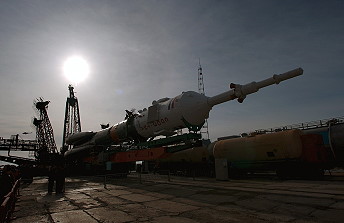 |
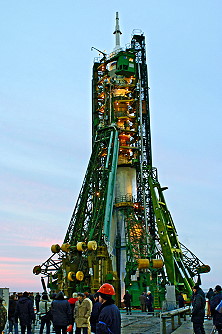 |
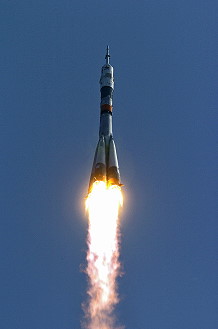 |
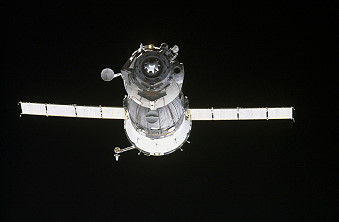 |
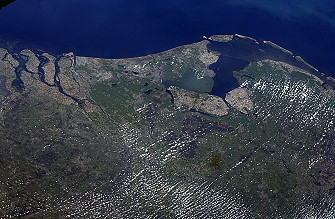 |
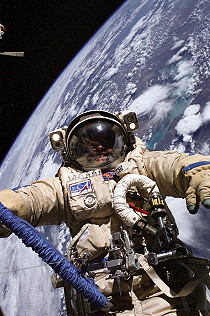 |
 |
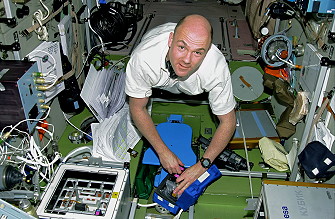 |
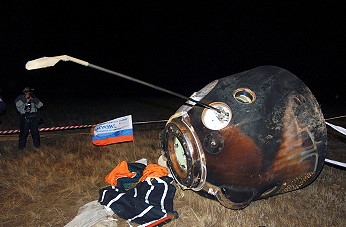 |
more EVA photos |
|
| © |  |
Last update on August 13, 2020.  |
 |